It took less than five minutes from a 911 call being placed reporting a domestic disturbance to a White officer firing seven times into Jacob Blake’s back in front of the 29-year-old Black man’s three young sons.
Those five minutes on August 23 set off chaos in Kenosha, Wisconsin: Protests and looting spread through the lakeside city’s streets, leaving burnt and boarded-up buildings across a swath of downtown. Two days later, the encounter sparked another tragedy, when a 17-year-old who claimed to be defending a business shot three other people during a confrontation, killing two. And Blake’s shooting reverberated nationally, with NBA, MLS and MLB stars refusing to play in an unprecedented protest.
Like other cell phone videos of police officers shooting or killing Black men, the 22-second clip of Officer Rusten Sheskey firing into Blake’s back, filmed through the screen window of a neighbor’s apartment across the street, ricocheted around the internet.
But authorities’ refusal for days to confirm even the most basic details about Blake’s shooting created a vacuum of information – and even now, more than a week and a half after Blake was shot, the exact circumstances that led to his encounter with police are unclear. Officials said Sheskey and two other officers on the scene tried to tase Blake, who had an open warrant after being charged with sexual assault a month earlier, and that a knife was recovered in his car. The local police union has claimed that Blake was carrying the knife and that he struggled with officers, putting one in a headlock before the cell phone video starts.
But family and lawyers for Blake, who was left paralyzed from the waist down, say he was unarmed and was attending a birthday party for one of his kids. “They shot my son seven times. Seven times. Like he didn’t matter,” Jacob Blake Sr., Blake’s father, told reporters. “But my son matters. He’s a human being, and he matters.”
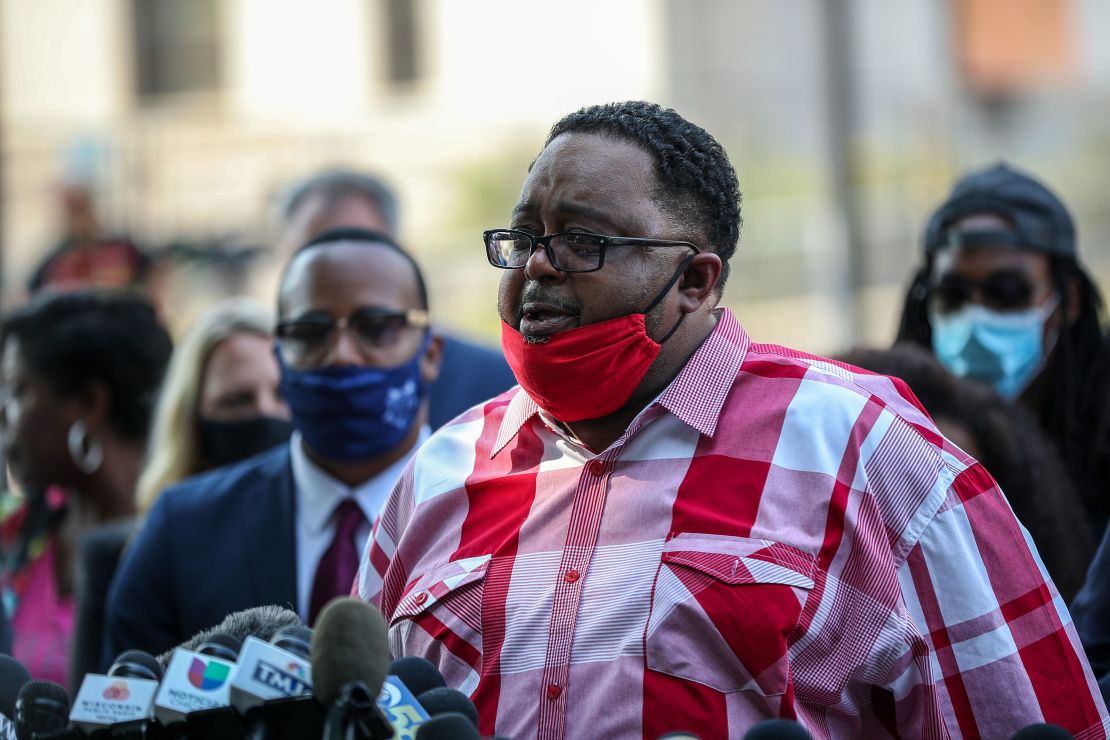
Confusion also spread about the shooting during the protests, with critics asking how the White teenager armed with a military-style rifle, Kyle Rittenhouse, could have walked by police after gunning down two people – even as right-wing commentators called him a hero who was just defending himself.
The two shootings, taking place in a swing county of one of the 2020 election’s most crucial battleground states, swiftly filtered into political talking points.
President Donald Trump and his Democratic rival Joe Biden both visited Kenosha the week after Blake’s shooting. While touring burned-out buildings and meeting with law enforcement officials Tuesday, Trump declared that unrest the city had faced was “not acts of peaceful protests but really domestic terror.” He refused to condemn Rittenhouse, and didn’t mention Blake’s name.
Former Vice President Biden met with Blake’s family on Thursday and spoke on the phone with Blake, who he said “talked about how nothing was going to defeat him, how whether he walked again or not, he was not going to give up.”
Racial inequalities have long festered in Kenosha
Few residents of Kenosha ever expected their hometown to join the list of American cities whose names have become buzzwords for police violence and unrest.
A city of about 100,000 people midway between Chicago and Milwaukee, Kenosha was once an automaking powerhouse, with factories that built the first American cars to feature steering wheels and seat belts. But the city’s massive Chrysler auto plant shut down in 1988, taking thousands of jobs and leaving behind a field of debris, and the county’s largest employer is now a sprawling Amazon distribution center near the interstate.
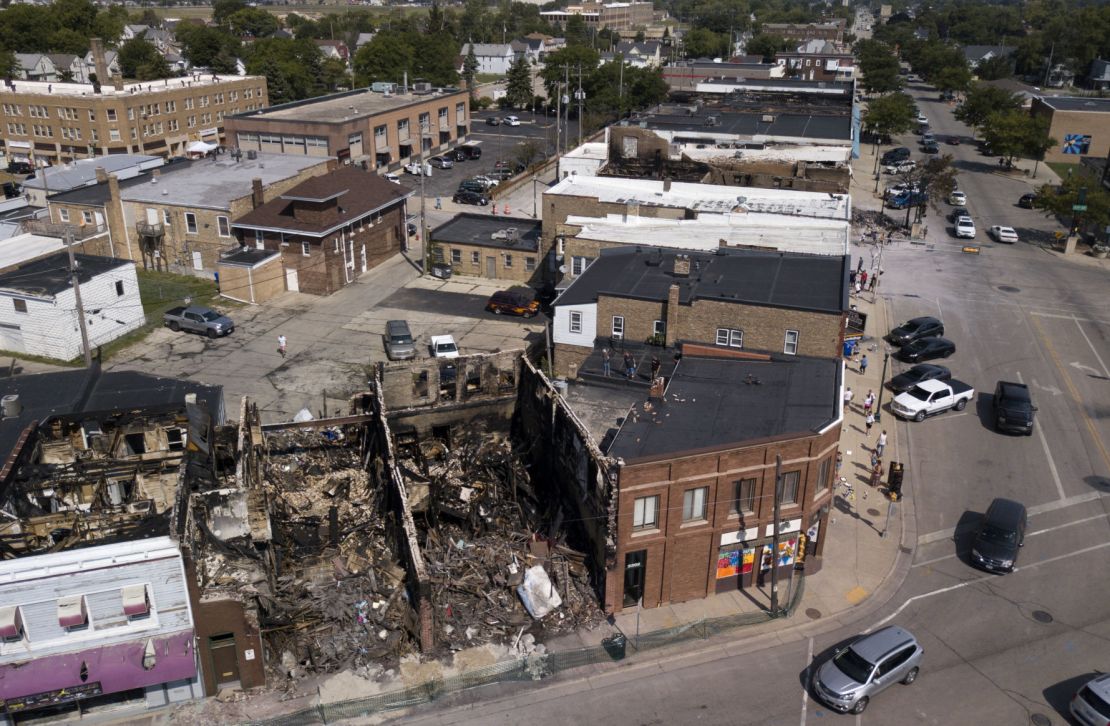
The Blake shooting has highlighted deep-seated racial inequities that have long festered below the surface of Kenosha’s sleepy Midwestern charm. A third of Black people in Kenosha County live in poverty, about 40% of adult Black men are unemployed, and Black people face an incarceration rate 12 times that of White people, according to an analysis by Marc Levine, the director of the University of Wisconsin-Milwaukee’s Center for Economic Development.
The economic and criminal justice disparities between Black and White people in southeastern Wisconsin are “among the widest” in the United States, he said.
Blake moved to Kenosha several years ago for a fresh start, his family said, after growing up in North Carolina and Evanston, a Chicago suburb. He shared a name with his grandfather, Jacob Blake, who was a minister and influential civil rights leader in Evanston. The elder Blake had led protest marches for fair housing laws, and a housing project there is named for him.
Friends and family say Blake, a father of six, volunteered with seniors and veteran groups and helped feed homeless people at a local mosque. He played football and basketball in high school, and was a natural joker, “the one in the family who will make everyone have belly laughs,” his mother Julia Jackson told CBS News.
Two years older than Blake, Rusten Sheskey was following in the footsteps of his own grandfather, who served as a longtime Kenosha police officer.
Sheskey has spent seven years on the Kenosha force, which he joined after working as an officer at the local UW-Parkside campus. As a police officer, he pedaled around the city as part of the bike patrol and walked the shopping mall beat during the holidays. He’d occasionally bring a squad car home from work and turn on the siren for neighborhood kids, one neighbor recalled.
“You’re dealing with people on perhaps the worst day of their lives and you can try and help them as much as you can and make that day a little better,” he told the Kenosha News in a profile published last year.
Police and city officials have not responded to public records requests for Sheskey’s history with the department, including any previous uses of force or disciplinary issues. According to a city memo, Sheskey received a one-day suspension in 2017 for a violation regarding “safe operation of department vehicles.”
Like Sheskey, almost 90% of Kenosha’s 207 police officers are White, according to the Kenosha News, while only 3% are Black – in a city that’s about 65% White and 10% Black.
Fatal police shootings have been relatively rare in the small department, with the Milwaukee Journal Sentinel tallying five over the past 17 years, only one of which killed a Black person. (The department did not respond to a CNN public records request for a full list of previous police shootings.)
One of those killed was Michael Bell, an unarmed 21-year-old who officers shot in his driveway in 2004. His father, Michael Bell, Sr., won a $1.75 million settlement from the city, part of which he used for an advocacy campaign that in 2014 led to a new Wisconsin law requiring police shootings to be investigated by independent agencies.
Other efforts to push for police reform in Kenosha have fallen short. In 2017, the city council unanimously approved a measure calling for police to wear body cameras, but the purchase of cameras was delayed until 2022 due to a budget shortage – leaving investigators lacking a crucial record of what transpired between Blake and the officers.
What we know about the shooting
In late May, Kenosha police were called to a low-slung apartment building not far from the former Chrysler plant. According to court documents, a woman told officers that Blake had broken into her house and sexually assaulted her before leaving with her car and debit card, and that he had previously assaulted her “around twice a year” over the past eight years. She did not respond to requests for comment from CNN.
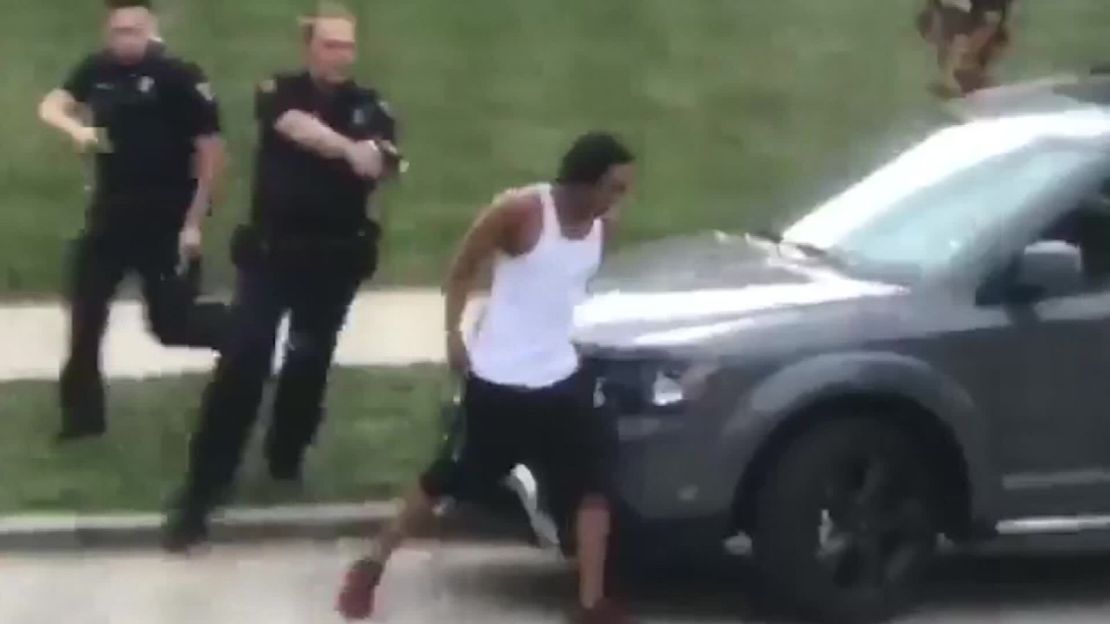
Blake was charged with third degree sexual assault and domestic abuse in July, and a judge approved a warrant for his arrest.
A month later, on Sunday, August 23, police were sent to the same address after receiving another 911 call from a woman who said Blake had taken her keys and was not supposed to be on the premises. A dispatcher informed the officers responding that Blake had an open warrant – but it’s unclear if they knew any of the details, or whether the woman who called police was the same person who accused Blake of sexual assault.
Officers were sent to the apartment at 5:11 p.m. and arrived at the apartment two minutes later, according to police dispatch audio. Just before 5:16 p.m., Sheskey opened fire.
The state Department of Justice, which is investigating the shooting, has released only a barebones sketch of what took place in the intervening minutes: Sheskey and two other officers on the scene tried to arrest Blake and tased him twice, without success. Blake then walked around a car, followed by Sheskey, as the neighbor’s video shows. As he opened the car door and leaned down, Sheskey grabbed Blake’s shirt and fired seven shots into his back.
Blake, who was airlifted to a Milwaukee hospital, later told investigators that he had had a knife in his possession, and a knife was found on the floor of the car, according to the DOJ.
Blake’s lawyers say Blake never represented a threat to officers and that he was trying to get his three sons out of a “volatile situation.” His kids, age three, five and eight, were in the backseat of the car.
The local police union, meanwhile, has claimed that Blake forcefully fought officers, putting one in a headlock. In a statement, a lawyer for the union said Blake held the knife and did not comply with officers’ commands to drop it during the altercation.
Both sides claim that video vindicates their dueling narratives. The union insisted that pausing the viral video at the right frame would show Blake holding the knife – although the clump of pixels shown in his hand could also be car keys. His lawyer Benjamin Crump, meanwhile, told CNN that “when you look at the video, he posed no threat to those officers as he was walking away from them,” and said there is additional video that will be released that will “clear all this up.”
Even though his legs were paralyzed, Blake was handcuffed to his hospital bed, which his family said added insult to injury. His shackles were removed late last week when the district attorney vacated the warrant in the assault case, although Blake still faces criminal charges.4
As authorities flail in spotlight, a ‘call to arms’ emerges
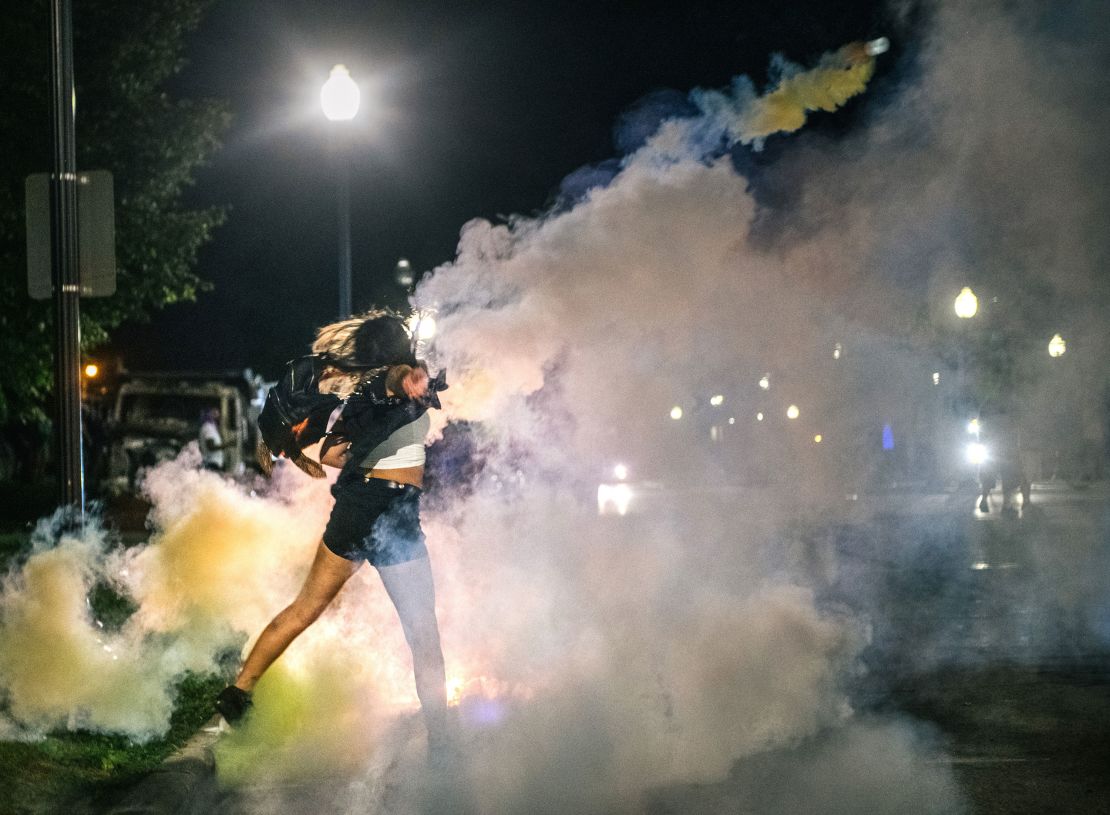
As Blake fought for his life in the Milwaukee hospital, the video of his shooting spread across social media like wildfire.
State leaders like Gov. Tony Evers and Lt. Gov. Mandela Barnes raced to denounce the shooting.
“This felt like some sort of vendetta being taking out on a member of our community,” Barnes said in a livestreamed video the day after. “Jacob Blake was actually trying to deescalate a situation in his community, but the responding officer didn’t feel the need to do the same.”
The police union blasted Evers in a statement and urged the public to “withhold from passing judgment until all the facts are known and released.”
Over the three nights after the shooting, larger and larger crowds of protesters gathered in downtown Kenosha to denounce the police. While many protesters were peaceful, others torched cars and buildings, broke windows, and looted businesses after night fell. Many who took part in the unrest came from elsewhere: 102 of the 175 people arrested in the week following the shooting listed addresses outside of Kenosha, according to the police department.
In one car lot on Sheridan Road, nearly every vehicle was a charred wreck. Most downtown businesses boarded up their storefronts, with some painting messages like “kids live upstairs” or “Black-owned business” on the plyboards covering their windows.
Local officials stayed mostly silent about the shooting for days, refusing to release basic details about what took place. It wasn’t until three days after the shooting that Sheskey was named as the officer who shot Blake and that state officials first said Blake had “admitted” he had a knife in his possession.
Officials cited the Wisconsin law putting the investigation in the hands of the state Department of Justice to explain their reticence. But again and again, local leaders flailed in the national spotlight. Police Chief Daniel Miskinis seemed to suggest at one press conference that the two people killed during protests were to blame for violating a curfew, and Sheriff David Beth said five days after the shooting that he had not yet seen the viral video of Blake being shot. Miskinis and Beth did not respond to requests for comment.
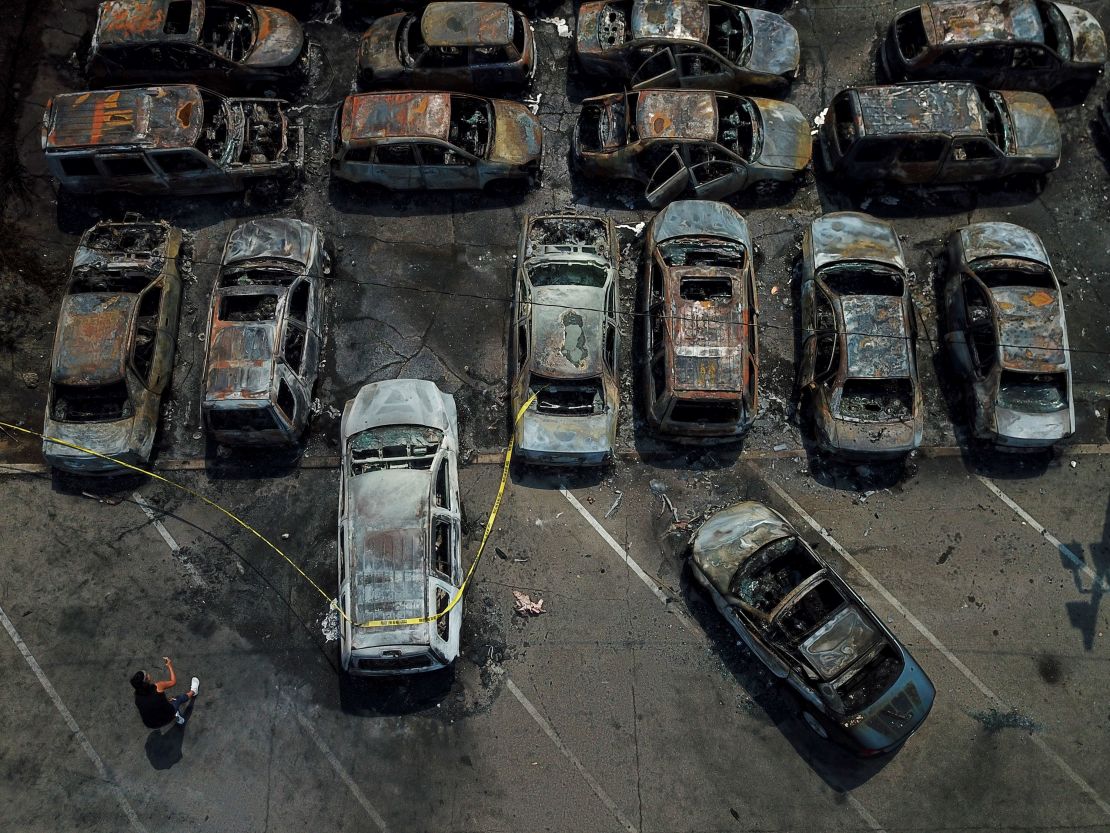
On Facebook, a newly-formed group called Kenosha Guard started an event titled “Armed Citizens to Protect our Lives and Property” on the third night of protests, calling people with guns to come to the plaza in front of the county courthouse. More than 2,000 users expressed interest in attending.
Kevin Mathewson, a former Kenosha alderman, said he started the group after concluding that law enforcement was “outnumbered.”
“I figured with citizens taking up arms, the epitome of the need for the Second Amendment, we wouldn’t be outnumbered,” he told CNN in a phone interview. “It was simply a call to arms: ‘Hey, if you’re sick of your community burning down and you’re a law-abiding citizen, take up arms and defend our community.’”
The page was flagged to Facebook by users at least 455 times, according to internal documents reported by BuzzFeed News. But moderators decided not to take it down despite Facebook’s rules against militia content – a decision that CEO Mark Zuckerberg later acknowledged was an “operational mistake.”
It’s unclear how many people were actually drawn to the city by the Facebook event. But a contingent of men carrying military-style rifles were present during protests, patrolling the streets and standing on the roof of one damaged building.

Tension and tear gas filled the air the night of August 25, as police in mine-resistant vehicles clashed with protesters in front of the 8-foot-high fence officers had erected around the graffiti-covered courthouse. As the 8 p.m. curfew passed, police aggressively rounded up protesters.
But officers seemed to make exceptions for a group of men holding long guns, according to one video posted to social media. “We appreciate you guys, we really do,” officers are seen telling the men, cracking open the hatches on their armored vehicles to toss them bottles of water. Beth, the sheriff, said the county’s deputies “would toss a water to anybody.” Still, a few hours later, one of the young men they complimented would gun down two people.
Teen’s night at protest ends with ‘I just killed somebody’
Just as in police officers’ encounter with Blake, many of the details surrounding the fatal shooting amid the chaotic protests are still unclear, and political actors have used the confusion to push their own narratives. But there’s no dispute that 17-year-old Kyle Rittenhouse fired the shots that killed two protesters and injured a third.
Rittenhouse was living in Antioch, Illinois, about a half hour drive from Kenosha through farm fields and country roads that straddle the border between the two states. His connection to Kenosha is unclear – while his lawyer has claimed he worked as a lifeguard at a local pool and was helping a local business owner defend their property, CNN could not independently verify those claims.
Numerous videos taken during the protests show Rittenhouse, wearing a green T-shirt and a backward baseball cap and carrying an AR-15-style rifle, walking the city’s streets with a group of armed men.
According to the criminal complaint against Rittenhouse, which is based on videos and witness accounts, the situation turned deadly after the teenager scuffled with protesters near a car dealership. He allegedly shot Joseph Rosenbaum, a 36-year-old unarmed protester, after Rosenbaum threw an object that appeared to be a plastic bag at him and missed.
As Rosenbaum lay on the ground, the complaint says, Rittenhouse ran away while calling a friend and telling them, “I just killed somebody.” He was pursued by protesters, and then tripped and fell to the ground.
While he was on the ground, Rittenhouse shot Anthony Huber, who appeared to hit him with a skateboard, according to the complaint, and then shot a third protester approaching him, Gaige Grosskreutz, in the right arm. Grosskreutz was holding a handgun but had his hands up, the complaint says.
After the shooting, Rittenhouse walked by police with his hands up, bystander videos show, and he turned himself in at his local police department the morning after the shooting. He’s now being held at an Illinois detention center as he waits for a hearing next month on his extradition to Wisconsin to face first-degree murder charges.
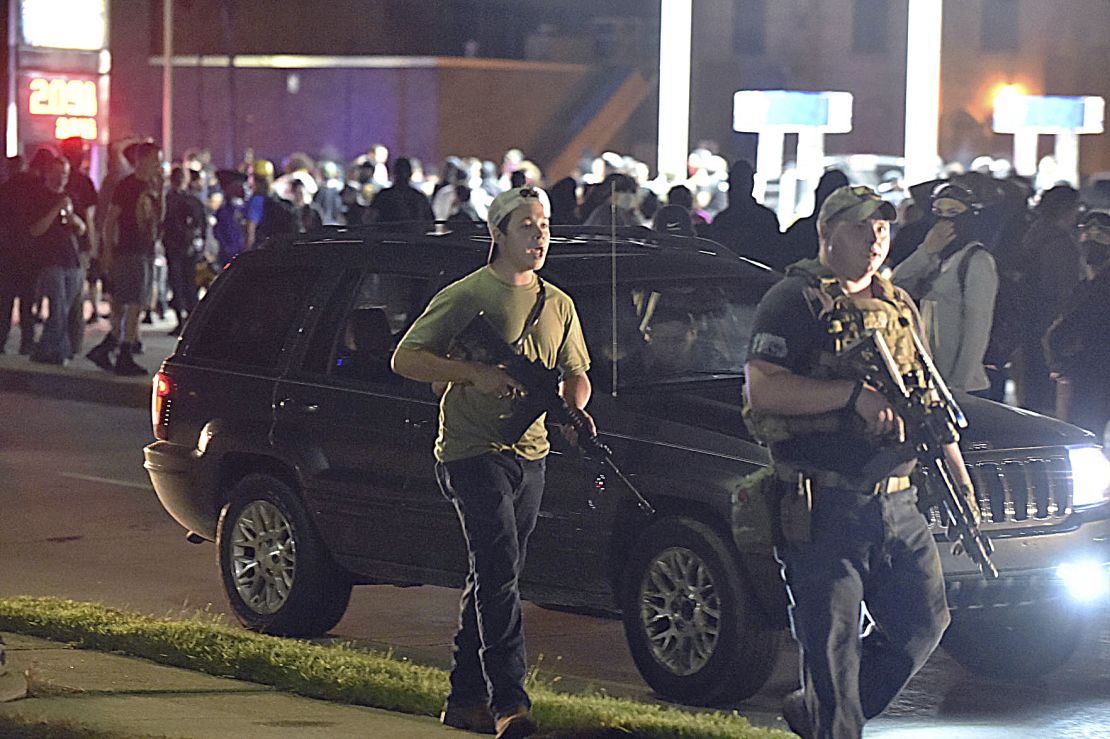
Court documents show that Rittenhouse had a troubled family life as he bounced between apartments and school districts across the northern Chicago suburbs. When he was four years old, his father was charged with four counts of domestic battery after allegedly hitting his mother, in a case that prosecutors later dropped without providing details why. Rittenhouse’s parents also faced a string of lawsuits accusing them of failing to pay rent over the years, and he, his mother and two sisters were evicted from their apartment in February 2018, according to court documents.
As a middle schooler, Rittenhouse was bullied to the point that his mother asked a court to impose a “stalking no contact order” against two other teenagers who, she claimed in a hand-written 2017 petition, were threatening and cyberbullying him. A judge dismissed the case when she failed to show up for a hearing. Rittenhouse’s parents did not respond to multiple requests for comment.
More recently, Rittenhouse embraced law and order and conservative politics, filling his social media profiles with paeans to the Blue Lives Matter movement and President Trump. He joined a local police cadet program for aspiring young officers. Former schoolmates remembered him as short-tempered and easily offended, Vice News reported, with one telling the website that “if you said anything bad about Trump, he’d threaten you.” In January, Rittenhouse attended a Trump rally five hours away in Des Moines, Iowa, posting a TikTok video from his spot in the front row.
In the days before he allegedly killed two people, a Snapchat account believed to belong to Rittenhouse posted demeaningly about Blake, screenshotting Blake’s mugshot and arrest record and captioning it “Lol yeah he’s innocent.”
Now, as Rittenhouse awaits his extradition hearing, he has become a symbol and hero for some in the conservative movement he eagerly supported. Fundraisers for his legal defense and messages supporting him have spread widely on Facebook, and high-profile conservative lawyers rushed to take his case.
The teenager was targeted “in a reactionary rush to appease the divisive, destructive forces currently roiling this country,” Pierce Bainbridge, the law firm representing him, wrote in a statement. Rittenhouse “defended himself, which is a fundamental right of all Americans given by God and protected by law,” the statement said.
Others see the response to Rittenhouse as a chilling glorification of vigilante violence and an implicit confirmation of racial biases in policing. According to social media videos taken after the shooting, Kenosha officers drove by Rittenhouse as he walked toward them with his hands raised and protesters tried to tell them he was the shooter – a very different response from Sheskey opening fire on Blake.
“That white young man got a high-five and some water,” Blake, Sr. told CNN. “My son got seven to the back – hot ones through his back.”
‘He did not deserve to die’
Even as Biden and other Democrats have condemned both Blake’s shooting and the violence that followed, the unrest in Kenosha has become a potent symbol for Trump as he tries to redirect national attention from the coronavirus pandemic to issues of law and order with two months to go until Election Day.
Trump declined to meet with Blake’s family when he visited Kenosha because of their request to have lawyers present, and when asked by a reporter whether he believed there was systemic racism in the US, the president responded by changing the subject. “We should talk about the kind of violence that we’ve seen in Portland and here and other places,” he said. “It’s tremendous violence.” He seemed to defend Rittenhouse, saying the teenager “probably would have been killed” had he not shot two people.
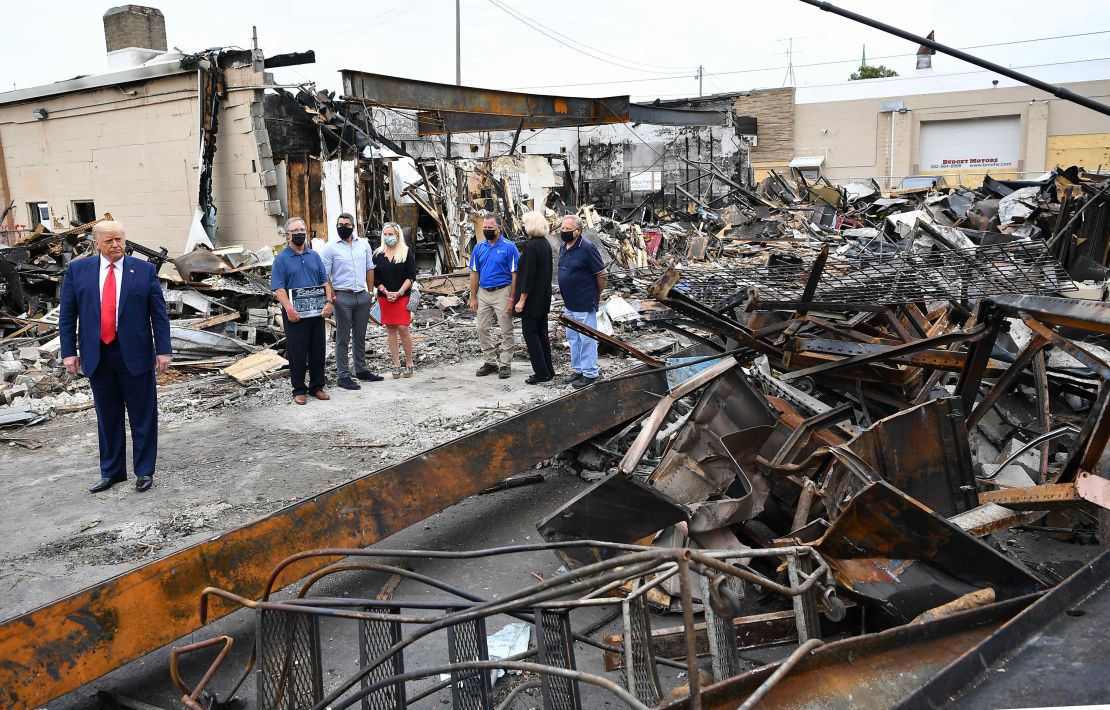
Some Kenoshans said they were unhappy with how swiftly the shooting had become politicized. Cathy Broadway, an educational sign language interpreter who’s lived on the same block as Sheskey for almost two decades, stayed up late listening to a police scanner and sent her son to stay with family during the unrest.
Broadway, 46, who called the video of Blake’s shooting “horrific,” said she never imagined her city would find itself in the national spotlight.
“People call it Keno-where,” she said. “Now we can’t call it that because everyone knows where it is.”
Family and friends of Rosenbaum and Huber, the two men shot dead by Rittenhouse, are trying to pick up the pieces. Huber’s girlfriend, Hannah Gittings, told CNN that Huber was thinking about saving lives when he went to confront Rittenhouse with his skateboard.
“He loved this city ‘cause it was his city, and he wanted to make it better and he wanted to stay in this house with me and my daughter and raise her here,” she said. “He did not deserve to die.”
Many residents have come together to help their city rebuild and heal, painting boarded-up storefronts with colorful homemade murals sharing messages like “love is the answer” and “Kenosha strong.”
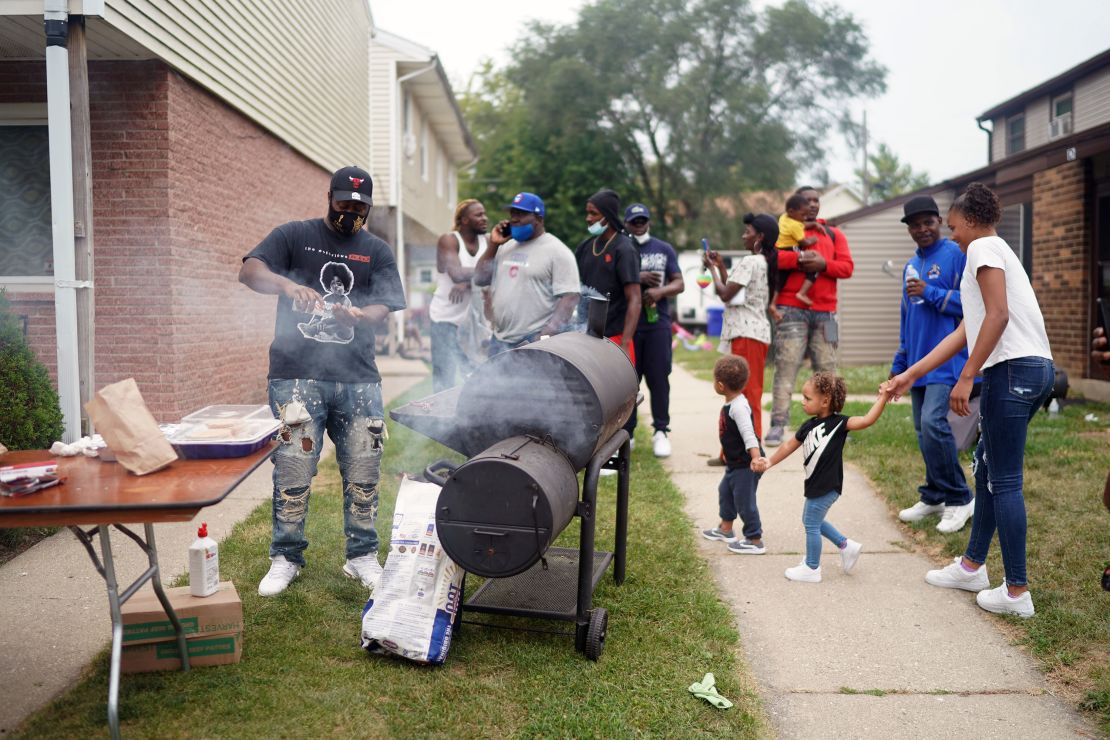
As Trump toured burned-out businesses Tuesday, Blake’s family held a community block party at the intersection where he was shot. Activists registered voters and served up barbecue, while kids colored signs to hang in Blake’s hospital room.
Blake’s uncle Justin, wearing a black #JusticeForJacob mask, told attendees his nephew was in severe pain but “starting to slowly but surely get his vibrance back.”
“We’re going to rebuild our community,” Justin Blake declared. “We’re going to make some big changes that are going to affect all the little Jakes around this nation.”
CNN’s Scott Glover, Lucy Kafanov and Paul Murphy contributed to this report.





